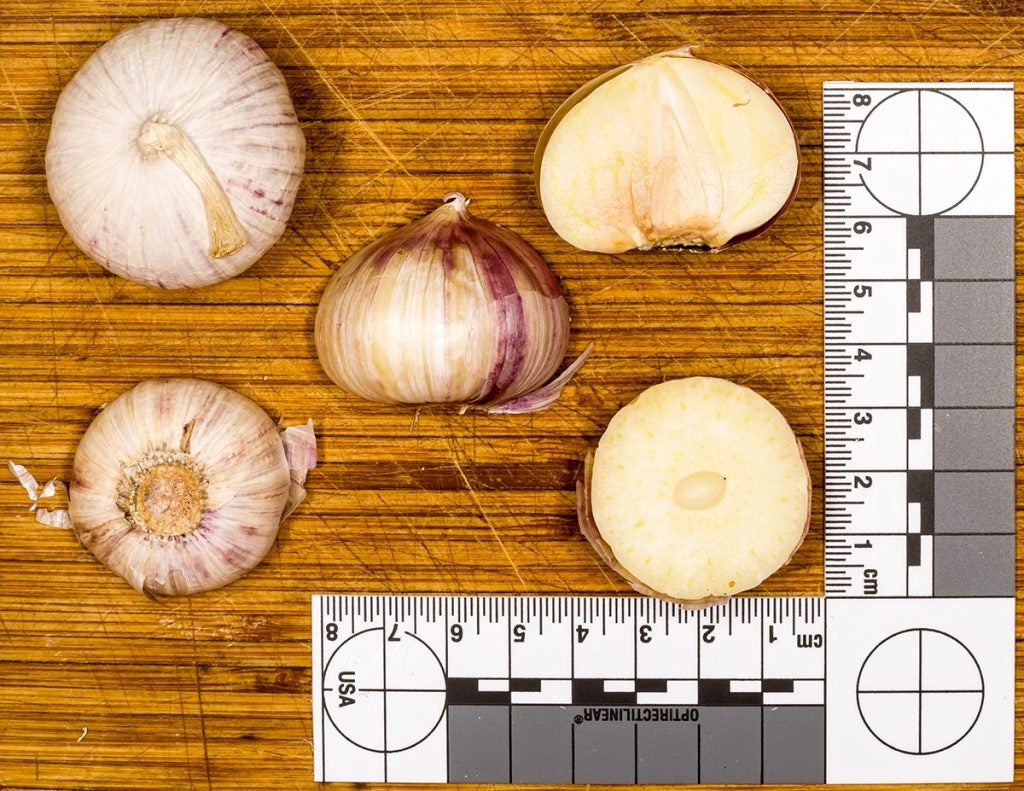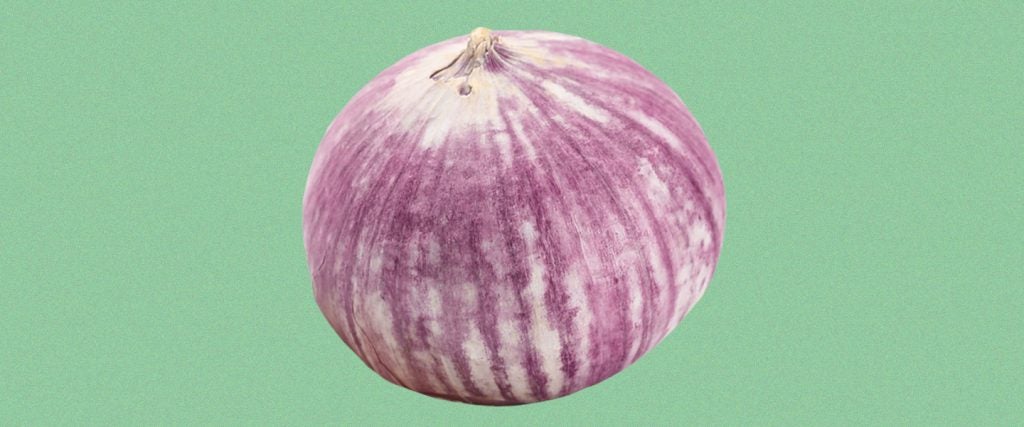For decades, the majority of America has been complacent with using a single, generic kind of garlic. Let’s call it “supermarket garlic”: You don’t know where the bulbs are from, or how much time has passed since harvest, or even how large the garlic cloves inside will be. You just pick out the fattest bulb from the pile and hope it hasn’t already started growing bitter green sprouts on the inside.
But what if I told you there was another way? A different world of multifaceted garlic, each with nuanced differences in flavor and size?
Indeed, such a world exists beyond the pale of our generic-garlic purgatory. And I believe that the king of this world is the legendary solo garlic: A chungus-sized bulb composed of a single massive clove that has subsumed all others around it.
You will be forgiven for thinking those are small onions, but nope, that’s an entire small head of garlic fused into a single clove. Solo garlic can come in a variety of sizes, from an inch in diameter to the size of a baby’s fist, but the benefits are obvious no matter the size: There’s hardly any papery peels to deal with, and each “bulb” is much easier to slice, mince or grate because of the proportions.
I discovered solo garlic while perusing Reddit, and it’s obvious that this bizarre chungus garlic is a source of delight for those lucky enough to use it. That includes huge swaths of China and India, both major producers of solo garlic, and European countries like Germany and England, where solo garlic is allegedly sold at major supermarkets.
So much for American exceptionalism. The only special kind of garlic I’ve ever seen at the supermarket is elephant garlic, which isn’t a “true” garlic species, as it’s a closer relative to the leek (and similarly mild in flavor). Solo garlic, on the other hand, is the allium sativum we already know and love, just grown in a special environment in order to make multiple cloves morph into a single unit.

The trick to making this happen has everything to do with weather. Garlic is usually planted at the end of summer or early fall, and grows through the winter cold before being harvested in the late spring. As horticulturist Alys Fowler points out, a single-clove bulb can be the result of too-warm temperatures during the early stages of growth. That may explain why so much solo garlic is imported from China and the foothills of the Himalayas to the south: The conditions there are just different from American farms, and they’ve learned to appreciate this weird little defect as a culinary delight.
Solo garlic lovers say that it has a less spicy flavor than conventional garlic, but with a deep fragrance that lingers on the palate. But beyond the specifics of how it tastes, I’ve fallen in love with the idea of this garlic because of how amusingly thicc it looks. It’s a cute new wrinkle in our national obsession with garlic, which has grown and grown since garlic became a faddish superfood in the 1990s. I equally blame the legendary chef Emeril Lagasse, who hypnotized TV audiences on Emeril Live with his fearless, almost obsessive love affair with the allium.
Consider the episode dubbed “Garlic Galore”: “Oh, let’s add… 40, 50 cloves here,” he deadpans while stirring together some garlic butter, rousing the audience into raucous cheers.
That national obsession doesn’t seem to be going anywhere, even with backlash from chefs and cooks who suggest that, maybe, there is such a thing as too much garlic. Solo garlic stands firm against this idea, taunting our pre-existing notions of what a “garlic clove” in a recipe truly means. The “clove” has always been a terribly imprecise, widely confusing unit of measurement, anyway — and solo garlic blows up that metric with its sheer chungus proportions. Who knows how much you’re supposed to put in that dressing or sauce? Just keep chopping the bulb!
I have a feeling that solo bulb garlic will soon have its moment in the sun in America, along with other specific varietals of garlic that consumers aren’t aware of. I’m tempted to start calling garlic farms near me to see if they’re growing solo garlic, even by accident. It’s possible that our garlic crops will just begin to morph on their own, through the power of climate change and increasing regional heatwaves. But what’s obvious now is that the American consumer deserves more choice when it comes to their favorite superpowered allium plant.
As Ron Engeland wrote in his book Growing Great Garlic, “Professionals have wrestled with the problem of garlic varieties for over 100 years and basically succeeded in creating a very fine mess with very little agreement.”
Well, perhaps we can agree on this: Solo-bulb, chungus-sized garlic is innately hilarious and incredibly easy to use. Standard garlic is dead. Long live the solo bulb.

